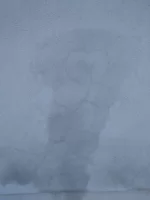You have reached the maximum number of views available on this site without registering.
You are using an out of date browser. It may not display this or other websites correctly.
You should upgrade or use an alternative browser.
You should upgrade or use an alternative browser.
More crazing
- Thread starter solway
- Start date
You have reached the maximum number of views available on this site without registering.
You have reached the maximum number of views available on this site without registering.
Jamesdooley
New Member
You have reached the maximum number of views available on this site without registering.
You have reached the maximum number of views available on this site without registering.
Wayners
Well-Known Member
You have reached the maximum number of views available on this site without registering.
Jamesdooley
New Member
You have reached the maximum number of views available on this site without registering.
You have reached the maximum number of views available on this site without registering.
Simon85
Well-Known Member
You have reached the maximum number of views available on this site without registering.
You have reached the maximum number of views available on this site without registering.
Simon85
Well-Known Member
You have reached the maximum number of views available on this site without registering.
vfr12
MOTORC*NT
You have reached the maximum number of views available on this site without registering.
vfr12
MOTORC*NT
You have reached the maximum number of views available on this site without registering.
You have reached the maximum number of views available on this site without registering.
You have reached the maximum number of views available on this site without registering.
vfr12
MOTORC*NT
You have reached the maximum number of views available on this site without registering.
Mouldyoldspudgun
Well-Known Member
You have reached the maximum number of views available on this site without registering.
You have reached the maximum number of views available on this site without registering.
Mouldyoldspudgun
Well-Known Member
You have reached the maximum number of views available on this site without registering.
vfr12
MOTORC*NT
You have reached the maximum number of views available on this site without registering.
You have reached the maximum number of views available on this site without registering.
vfr12
MOTORC*NT
You have reached the maximum number of views available on this site without registering.
You have reached the maximum number of views available on this site without registering.
You have reached the maximum number of views available on this site without registering.
You have reached the maximum number of views available on this site without registering.
vfr12
MOTORC*NT
You have reached the maximum number of views available on this site without registering.
vfr12
MOTORC*NT
You have reached the maximum number of views available on this site without registering.
You have reached the maximum number of views available on this site without registering.
vfr12
MOTORC*NT
You have reached the maximum number of views available on this site without registering.
vfr12
MOTORC*NT
You have reached the maximum number of views available on this site without registering.
You have reached the maximum number of views available on this site without registering.
Danny
-
You have reached the maximum number of views available on this site without registering.
vfr12
MOTORC*NT
You have reached the maximum number of views available on this site without registering.
Danny
-
You have reached the maximum number of views available on this site without registering.
You have reached the maximum number of views available on this site without registering.
Similar threads
- Replies
- 1
- Views
- 1K
- Replies
- 4
- Views
- 941
- Replies
- 0
- Views
- 421

